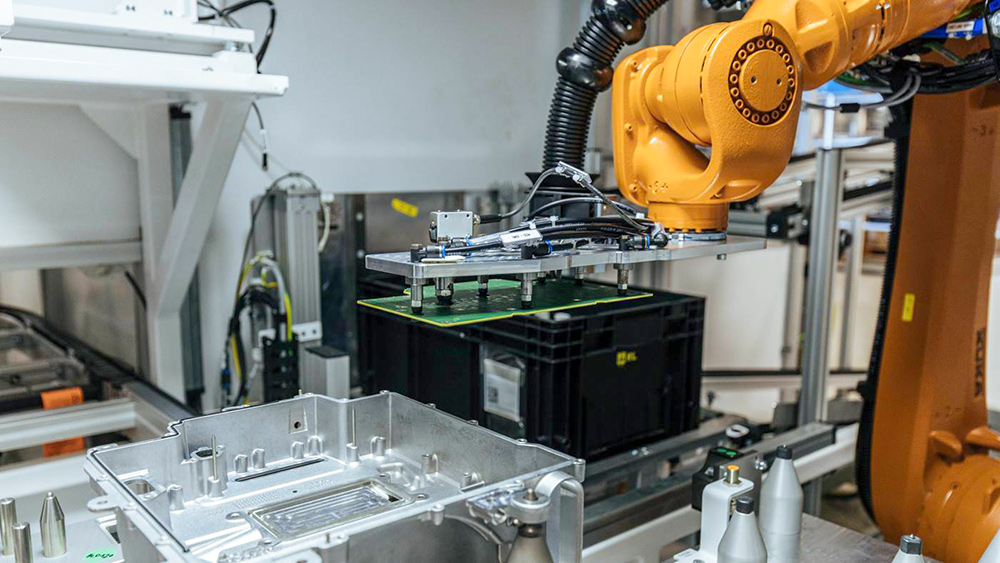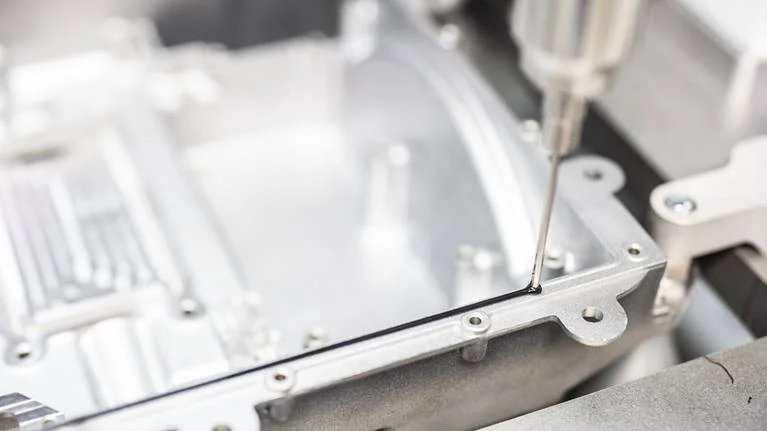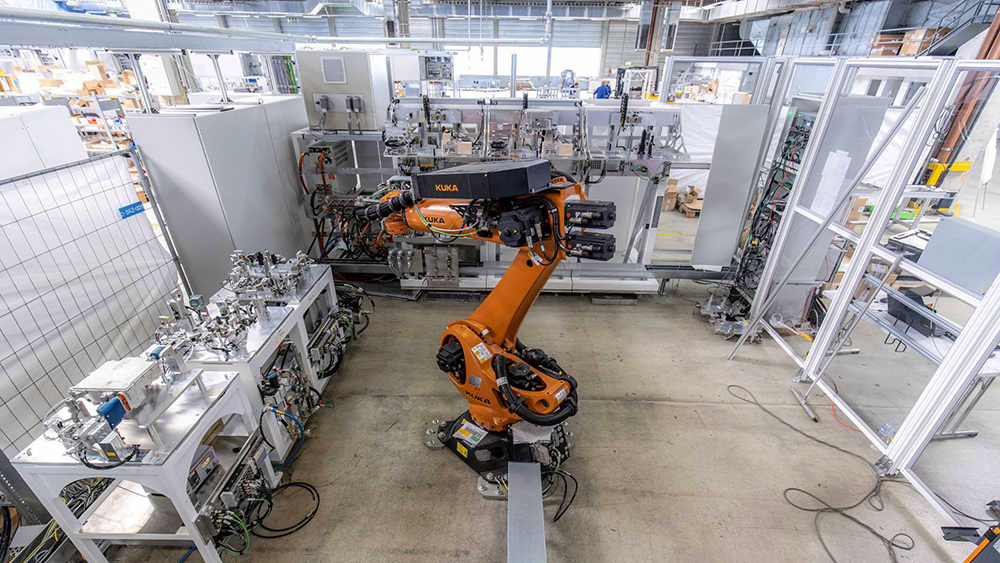

Working with KUKA and their robots, SAR has developed an automated manufacturing method that does more than just assemble parts for electric cars. It controls and monitors all the process steps – labelling the components, performing screwdriving and gluing operations and even testing and inspecting the intermediate steps and ultimately the finished product.
This production concept has been implemented at three locations (Erlangen, Germany; Vezprem, Hungary and Shanghai, China) in a total of five production lines for two automotive manufacturers.
The industrial robots insert various electronic components into the housing of the control unit. They clean and check, pick out rejects or rework parts. Each assembly step is performed with care and precision, since the components are as sensitive as they need to be for the finished electric car.
Production takes place under EMC and clean room conditions. This means that bonding joint surfaces in the manufacturing process are first cleaned, and any dirt particles are removed. Then, robots apply sealing compound, and the different component are inserted into the housing. After that, robots screw the components in place. The screws are first blown off by compressed air distributors to remove any dust.
Meanwhile, leak checks and function tests are performed to ensure that high quality standards are maintained throughout the assembly process. In the final step, the finished control units are taken off the assembly line by robots and filled with water. The water is used to cool them down for the testing steps that come next.
A KUKA robot places the control units in the high voltage and low voltage isolation test set-up. The operating system is then flashed onto the inverters.
Once all they've passed all the tests and the water has been drained from them, the control units are ready to come to life as the core component of an electric car.
The production line could be broken down into three stages, for example. Parts of it could even be used at sub-suppliers' facilities. The degree of automation depends entirely on customer preference.
For more information, email us at
aut@sar.biz, or visit KUKA for the detailed article... (only available in German)

Precise assembly of an electric car control unit

Sealing compound being applied to the housing halves

A robot checking the functionality and leak tightness of the control units assembled for the electric car